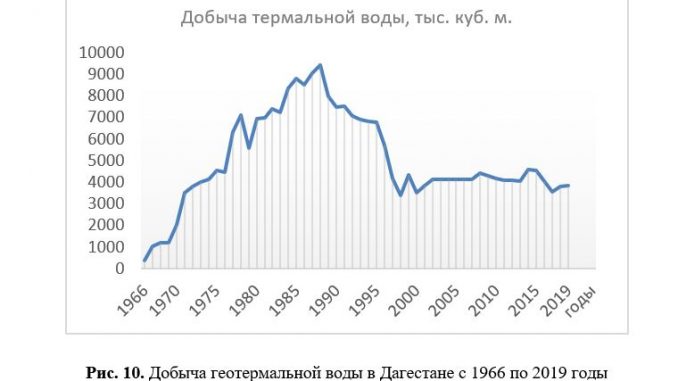
1Butuzov Vitaly
2Alkhasov Alibek
3Aliyev Rasul
4Badavov Hasan
1Kuban State Agrarian University named after I.T. Trubilina, Krasnodar, Russia
2Institute for Geothermal Research and Renewable Energy, Makhachkala, Russia
3Institute for High Temperatures RAS, Makhachkala, Russia
4Dagestan State Technical University, Makhachkala, Russia
1E-mail: ets@nextmail.ru,
2E-mail: alibek_alhasov@mail.ru,
3E-mail: geopromooo@yandex.ru,
4E-mail: lotos155@yandex.ru,
Abstract. Dagestan is first in Russia in explored reserves of geothermal water and second after Kamchatka in their production. There are 141 geothermal wells drilled at 13 explored fields, of which 4 are operated with 48 wells. The deepest geothermal wells were drilled in Dagestan – 5500 m deep with flow rates up to 7000 m3 / day. The maximum production of geothermal water was reached in 1988 ‒ 9.4 million m3 per year. The achievements of the Dagestan geothermal scientific school are analyzed in the paper. The successor to the academic geothermy of Dagestan is currently the Institute for Geothermal Research and Renewable Energy of the JIHT RAS (IPGVE).
The production structures for the drilling and exploitation of geothermal deposits have been described. The greatest successes of geothermy in the USSR are associated with the activities of the Soyuzburgeothermiya NPO (Makhachkala) and its six regional departments. The maximum production of geothermal water in the USSR was in 1988 – 60 million m3. Geothermal resources of Dagestan confined to three main structural-hydrogeological levels (SGHE): Pliocene, Miocene and Mesozoic, isolated from each other by clay strata. Analysis of geothermal water production from 1966 till 2019 (55 years) has shown that since 1997 it varied from 3500 to 4500 thousand m3 per year. The main characteristics of the explored and exploited deposits of Dagestan are given: Kizlyar, Thernair, and Izberbash fields The structures and methods of field development are described. The most complete information is shown to be contained in the reports of the VNIPIgeotherm Institute. The experience of creating the Dagestan Geothermal Power Plant, geothermal circulation systems (GCS), and co-production and separate extraction of geothermal water from different geological horizons has been analyzed. An example of the successful implementation of a surface geothermal heating system (SGHS) with a solar power plant in Makhachkala is given. Data on the experience of scaling and corrosion of equipment and pipelines prevention, as well as the neutralization of phenols during the discharge of waste geothermal water into surface water bodies are presented. The concept of creation of SGHS in Dagestan and their main characteristics have been described. Typical schemes of operating thermal distribution stations in Makhachkala, Kizlyar and Izberbash with a total thermal capacity of 35 MW with an annual heat output of 148 thousand MWh/year are presented. A promising scheme of geothermal heat supply for the conditions of Dagestan is proposed.
Keywords: geothermal field, well, reinjection, flow rate, mineralization, heat supply, geothermal heat supply system, geothermal power plant, solar plant, heat pump.
